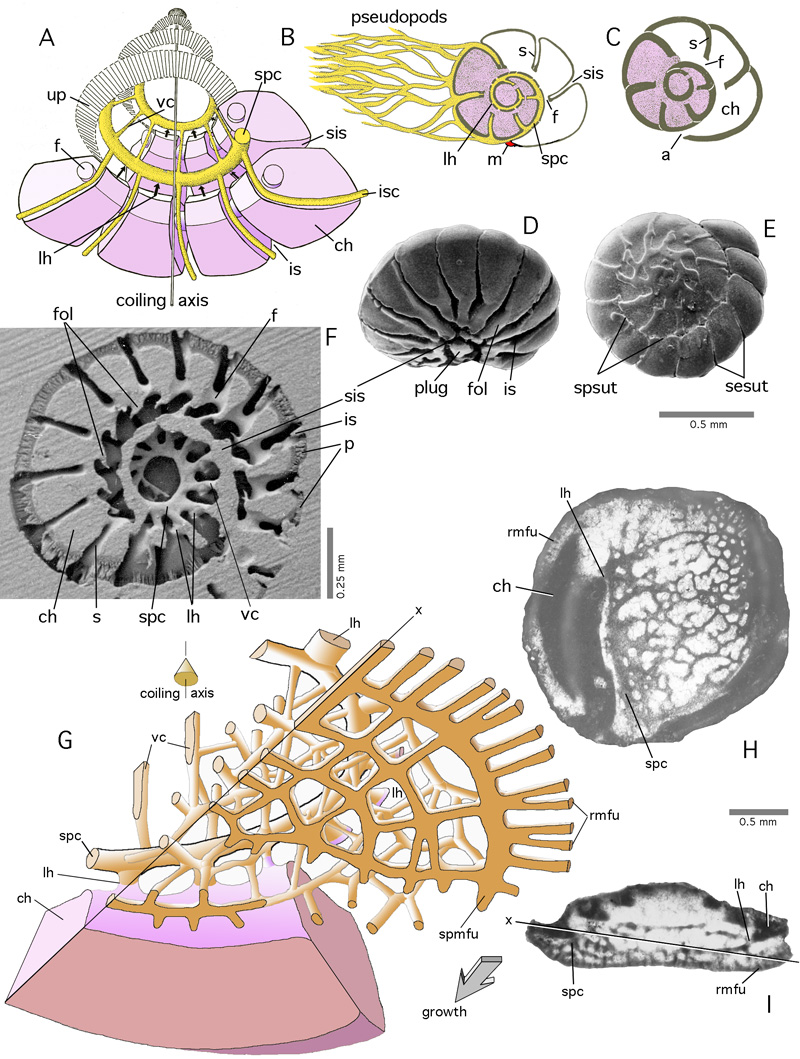
Figure 26: Canal systems.
A: basic geometry of canals in simple rotaliid shells. Schematic, not to scale. Red: chamber plasm; yellow: canal plasm. B-C: during stages of retraction of the chamber plasm into the interior of the shell, the canal system provides motility to the organism by extruding the pseudopods through backdoors, so-called loop-holes. D-F: Challengerella bradyi et alii. Gulf of Aqaba, Red Sea; Recent. SEM graphs. D: oblique-ventral view of umbilical face; E: dorsal (spiral) view; F: Epoxy resin cast of shell cavities showing canal system.
G-H: Hottingerella chouberti (), Northeastern Morocco,
Lower Cretaceous. Schema after , 1976, not to scale, and transmitted light micrographs. Note that the basic geometry with loop-holes in a shell lacking septal subdivision is similar to a rotaliid with chambers.
a: aperture: ch: chamber; f: foramen; fol: folium; is: interlocular, intraseptal space; isc: ingtraseptal canal; lh: loop-hole; m: mask; p: pores; rmfu: radial marginal furrows (open to the ambient environment for their full length prior to being covered by the next whorl); s: septum; sesut: septal sutures; sis: spiral interlocular space; spc: spiral canal; spmfu: spiral marginal furrow; spsut: spiral suture (between successive whorls); up: umbilical plate (general geometric position); vc: vertical canals (at umbilical chamber suture); x: approximate position of section.